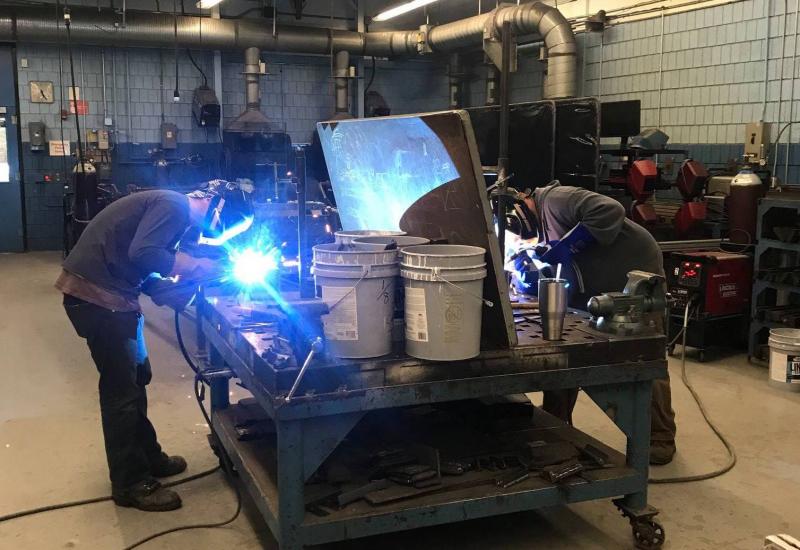Old Colony to use hybrid learning for reopening
ROCHESTER — After working on a plan since May with over 70 people involved in the process, Old Colony Regional Vocational Technical High School announced that it will resume classes in the fall online and in-person.
The July 30 announcement included a 40-page document that outlined in detail the reopening of the school. Students have the option of learning on a two-week hybrid cycle that mixes in-person vocational work and online learning, or learning fully online using the school’s technological capabilities.
“I couldn’t be more proud of the end product,” said Old Colony District Superintendent-Director Aaron Polansky.
The first full day of hybrid learning will be on Sept. 16. Students will go back to an A to F grading system rather than the pass/fail approach it used in the spring. Attendance will be taken both online and in-person as it normally would.
For high needs students, the school is setting up a system where they would attend classes in-person during both two-week cycles if needed.
Read a summary of Old Colony’s reopening plan below, and find the full, 40-page document here.
In-person learning
Two groups will be split up by grade: 9 and 11, and 10 and 12. The groups will rotate in two-week cycles between learning online remotely and learning in-person for vocational skills.
In person, students will be split up into cohorts of 15 according to their vocation to limit contact between students.
Masks will be required from the time students board their busses in the morning until the time they leave. Students will have opportunities for outdoor “masks breaks” throughout the day.
Desks and furniture will be spaced three feet apart, meals in the cafeteria will be pre-packaged to limit contact, the school will have a separate area for those showing symptoms of covid, and the dampers in the ventilation system will be completely open to allow the maximum amount of fresh air to circulate through the building.
The school will sanitize and clean all shared materials between uses. Students will be assigned to specific machines, computers, and equipment whenever possible.
Juniors and seniors who meet the requirements will be allowed to participate in the school’s Cooperative Learning Program to learn necessary vocational skills while working out in the field they are studying in.
For bussing, students will sit staggered in their own assigned seat and will wear a mask in accordance with state transportation guidelines.
Online learning
“Live” school day meetings will begin at 8:15 a.m., break from 11:30 to noon for lunch and end the day at 1 p.m. Between 7:30 and 8:15 a.m., as well as 1 to 2:20 p.m., instructors can meet in office hours or tutoring sessions with students, both online and in person.
Teachers will use a combination of live and passive learning to educate their students and fill learning requirements set by the state.
The school has purchased more laptops for students, upgraded its WiFi system in the building, and are looking into purchasing mobile hotspots for students to use at home.
How the plan was made
The plan is roughly based on the skeleton of Lexington Public Schools’ reopening plan, one of the first districts in the state who tackled the issue.
To devise the plan, the school put together a Fall Reopening Task Force that included teachers, parents, administrators, doctors and students.
The task force was then split up into four groups based on different aspects of the plan: Health and safety, blended learning, operations and whole child and staff support.
The groups met and discussed options for reopening, and then met as a whole to review drafts of the plan and poke holes in its framework. In total, there were five different drafts before the final plan was released.
Polansky said that task force members were allowed to “ask questions that were disruptive.”
Two options are offered to students because “our job is to find peace for as many people as possible, which means options,” Polansky said.
The option that was not feasible, he said, was having all students return to school.
The state required schools to submit three reopening plans for an in-person return, a hybrid model and remote learning, but Old Colony quickly realized that it would cost too much money to make it work.
“The reality was that we were not going to get there,” said Polansky.
Having students from five different towns in the school also complicated matters.
Still, the superintendent said the process of making the plan was a labor of love.
“We’ve perfected imperfection,” Polansky said.
And although it may be perfected in his eyes, he said the plan is still subject to change depending on how the state acts, but Old Colony is prepared for whatever comes its way.














